M OZART’S S ALZBURG & LINZ
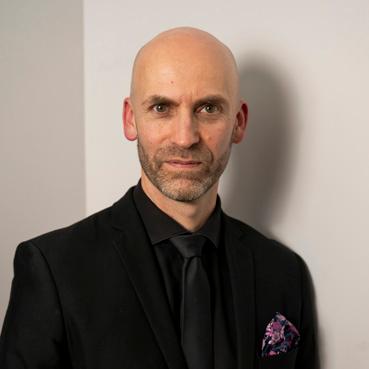
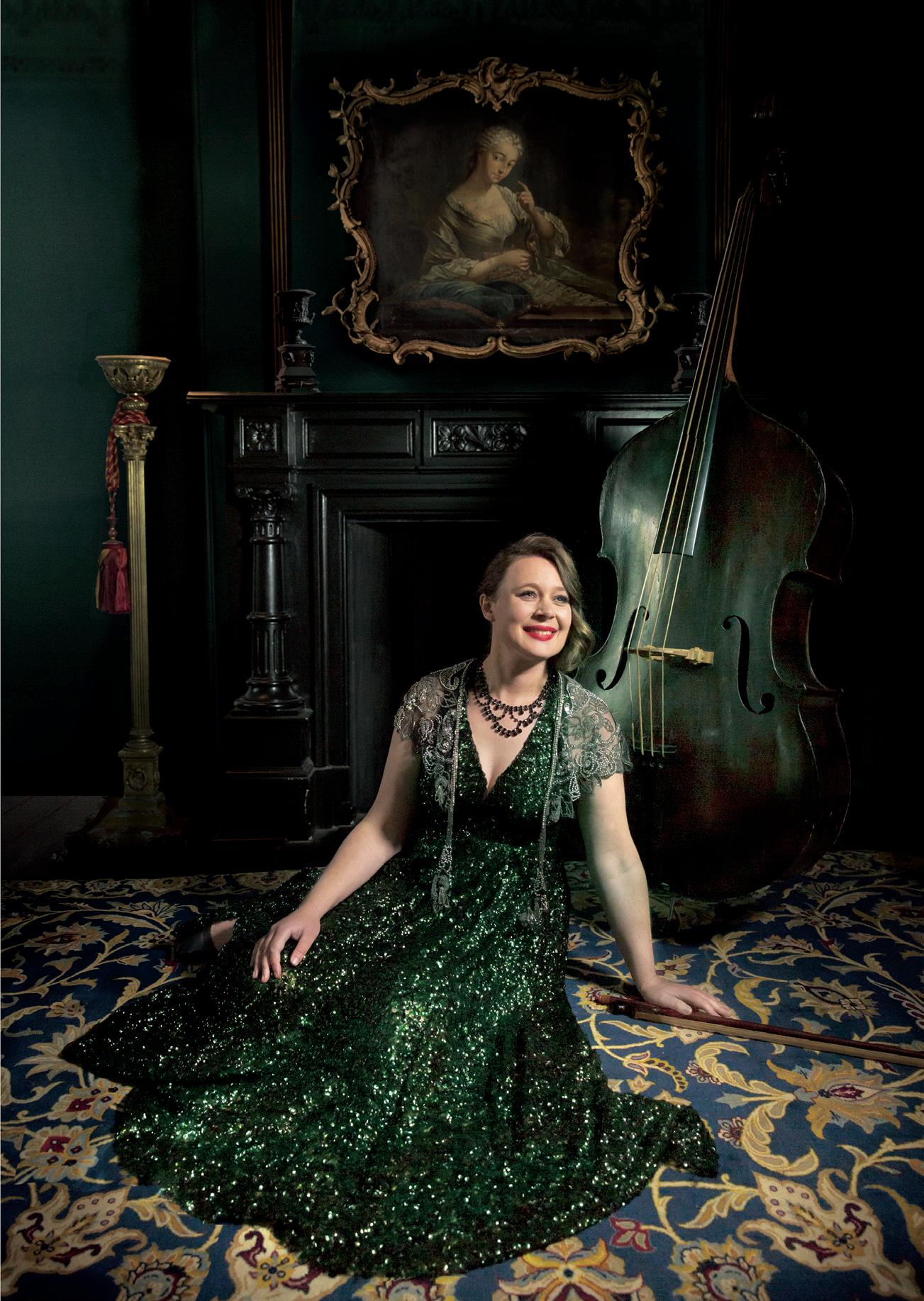
1—



1—
Haydn’s Sunrise MARCH
4—
Haydn’s Miracle AUGUST
2—
Schubert Songs with Dr David Greco MAY
5—
Beethoven’s Eighth NOVEMBER
1—
Haydn & The String Quartet with Genevieve Lang & the AHE Quartet MARCH
4—
Haydn & London with Andrew Ford AUGUST
2—
3— Mozart’s Salzburg JUNE
PRE-CONCERT EVENTS
Schubert’s Lieder with Dr David Greco APRIL
5—
Beethoven Arranged with Skye McIntosh OCTOBER
3—
Mozart & Salzburg with Dr Anthony Abouhamad & Skye McIntosh JUNE
Artists
Erin Helyard, soloist, fortepiano
Skye McIntosh, Artistic Director and violin
Anna McMichael, violin
Karina Schmitz, viola
Nicole Divall, viola
Daniel Yeadon, cello
Pippa Macmillan, double bass
Melissa Farrow, flute
Program —
MOZART
String Quintet No. 1 in B flat major K. 174
Piano Concerto No. 11 in F major K. 413 (arr. Helyard )
Piano Sonata in B flat major K. 333 Linz
Symphony No. 36 in C major K. 425 Linz (arr. Cimador)
The concert duration is approximately 1 hr 55 mins including a 20 minute interval
This concert is dedicated to the memory of our long-time supporters, Tom Gregory & Dr. Timothy Pascoe.
Performances
Friday 20 June, 7pm Gandel Hall
National Gallery of Australia
SOUTHERN HIGHLANDS
Saturday 21 June, 4pm Bowral Memorial Hall
SYDNEY
Sunday 22 June, 4pm
The Nielson, ACO on the Pier Dawes Point
18th Century Unpacked
Mozart in Salzburg with Dr Anthony Abouhamad, fortepiano & Skye McIntosh, violin
The Friends Room
The State Library of New South Wales
It is always a pleasure to work with our long-term friend and collaborator Erin Helyard, and this all-Mozart program offers the perfect opportunity to showcase his artistry and insight. Spanning Mozart’s youth in Salzburg to his maturity in Vienna - with a brief detour to Linz - this concert paints a vivid portrait of a precocious talent, as well as a master composer.
The concert opens with Mozart’s String Quintet in B flat major, K. 174, composed when he was just 17 years old. Written in Salzburg, the work is lighter in character than his better-known and often performed string quintets, such as the G minor. This work captures a youthful spirit with its lyricism and charm.
By the time we arrive in Linz, a decade later, Mozart’s world has changed dramatically. Now based in Vienna, his personal life is turbulent. Yet even amid strained family ties and the pressure of a hastily arranged concert for the local nobility, he composes the Symphony No. 36 within just five days In this performance, we present a rarely heard early 19th-century septet arrangement by Cimador, offering a fresh, intimate take on this wonderful work. To the best of our
knowledge, this marks the modern-day premiere of this long-forgotten chamber arrangement.
Between these two ensemble works, Erin takes centre stage at the keyboard. He performs a new chamber arrangement (his own) of the Piano Concerto No. 11 in F major, K. 413 for the same forces as Cimador’s septet. Erin also performs the solo Piano Sonata in B flat major, K. 333. Long believed to be a product of Mozart’s time in Paris, the sonata has since been traced back to that same fateful visit to Linz that produced the Symphony No. 36 and bears the same nickname.
Throughout his life, Mozart’s music managed to transcend circumstance. Whether in Salzburg, Linz, or Vienna, he transformed every joyful or troubled moment into something profound, playful, or even both at once.
Thank you for being part of our audience, and I trust you will enjoy our amazing musicians and this journey to Mozart’s Salzburg and Linz with Erin Helyard.
Skye McIntosh
Artistic Director & Violin
The Australian Haydn Ensemble, (AHE) was founded in 2012 by Artistic Director and Principal Violinist Skye McIntosh and is now in its thirteenth year. AHE has quickly established itself as one of Australia’s leading period-instrument groups, specialising in the repertoire of the late Baroque and early Classical eras. It takes its name from the great Joseph Haydn, a leading composer of the late 18th century.
AHE’s flexibility and inventiveness are inspired by Haydn’s fabled originality and the virtuosic musicians he worked with at the court of Esterházy for almost 30 years. It performs in a variety of sizes and combinations, ranging from quartet, quintet or septet, to chamber orchestra with special guest soloists to a full orchestra with choir.
The Ensemble has developed a flourishing regular series at the City Recital Hall, the Sydney Opera House Utzon Room and in Canberra, where it was Ensemble in Residence at the Australian National University in 2014. AHE also performs throughout regional NSW and presents
education workshops to students of all ages, focusing on imparting 18th-century historical performance techniques.
AHE is particularly interested in presenting unusual programs of 18th-century chamber versions of works by Haydn, Mozart and Beethoven, as well as presenting the music of lesser-known composers, such as Abel, Albrechtsberger, C.P.E. Bach, J.C. Bach, David, Graun, Hoffmeister and Vanhal.
To commemorate its 10th anniversary, the Ensemble recorded its third CD of music by Mozart, released in 2024. In October 2023 AHE undertook its first international tour of the United States, including performances at Carnegie Hall and at the opening of the new Australian Embassy in Washington DC, garnering full houses, standing ovations and glowing reviews.

Erin Helyard is an inspiring conductor, a virtuosic and expressive performer of the harpsichord and fortepiano, and a lucid scholar passionate about promoting discourse between musicology and performance.
Erin graduated in harpsichord performance from the Sydney Conservatorium of Music with first-class honours and the University Medal. He completed his Masters in fortepiano performance and a PhD in musicology at the Schulich School of Music, McGill University, Montreal.
As Artistic Director and co-founder of Pinchgut Opera and the Orchestra of the Antipodes he has forged new standards of excellence in operatic performance in Australia. Operas under his direction have been awarded Best Opera at the Helpmann Awards for three consecutive years (2015-2017) and he has received two Helpmann Awards for Best Musical Direction. With Richard Tognetti, Erin won an ARIA and an AIR award for Best Classical Album in 2020.
Since returning to Australia, he has distinguished himself as a conductor with the Sydney, Adelaide, Tasmanian, and Queensland Symphony Orchestras, ACO Collective, the Australian National Academy of Music, and the Australian Haydn Ensemble. He has performed and recorded with Avi Avital, Melissa Farrow, David Greco, Stephanie McCallum, James Morley, and Richard Tognetti. In 2018 he was recognised with a Music and Opera Singers Trust Achievement Award (MAA) for contribution to the arts in Australia. In 2023 he was named Limelight’s Critics’ Choice Australian Artist of the Year.
Erin is an Associate Professor at the Sydney Conservatorium of Music

Skye is the founder and Artistic Director of the Australian Haydn Ensemble, now in its thirteenth year. This audacious undertaking is a testament to Skye’s musicianship and entrepreneurial spirit.
AHE, known for its innovative and ambitious programming, was delighted to perform at the Adelaide Festival in 2022 and Canberra International Music Festival in 2022 and 2023, as well as continuing to tour to Canberra and across regional New South Wales each year.
Skye attended the Royal Academy of Music in London, the Queensland Conservatorium and the Sydney Conservatorium of Music, has made numerous concert appearances as soloist and director, and led the AHE on its first tour to the US in 2023, including a performance at Carnegie Hall. She has also toured nationally with the Australian Brandenburg Orchestra, as well as performing with the Orchestra of the Antipodes (Pinchgut Opera) and the Australian Romantic & Classical Orchestra.
ABC Classics has recently released AHE’s third CD, featuring Skye performing Mozart’s Violin Concerto in G major.
Skye is playing a violin by Tomaso Eberle, 1770, Naples

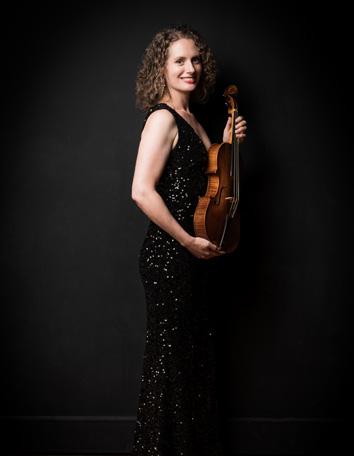
Anna is the Head of Strings at the Sir Zelman Cowen School of Music, Monash University. She is a violinist, former festival director, and artistic researcher with a national and international performance career spanning 30 years. She lived in Europe for 17 years, performing with the Netherlands Chamber Orchestra, Royal Concertgebouw Orchestra, and London Sinfonietta, as well as with ensembles including the ASKO/Schonberg Ensemble and Ensemble Modern.
Anna has performed regularly with Australian groups, including the Australian Chamber Orchestra, Pinchgut Opera, Ensemble Offspring, Australian World Orchestra, Australian Haydn Ensemble, Sydney Chamber Opera and Omega Ensemble, and was Co-Artistic Director of the Tyalgum Music Festival from 2014 to 2019.
She has an extensive solo, duo, and ensemble discography across many international labels, having recorded duo CDS for the Tall Poppies label and a solo violin and electronics CD for the Dutch label Unsounds. She has appeared regularly at the Mona Foma festival, the Melbourne Metropolis Festival, Sydney’s Vivid, and the Adelaide and Sydney Festivals.
Anna is playing a violin by Camilli Camillus, 1742, Mantu
Hailing from the east coast of the United States, American violist Karina Schmitz has settled in Australia and is thrilled to be immersed in its rich and vibrant musical scene. In addition to performing with the Australian Haydn Ensemble, she is principal violist with Orchestra of the Antipodes (Pinchgut Opera), and has performed with the Australian Chamber Orchestra, the Australian Romantic & Classical Orchestra, Van Diemen’s Band, Salut! Baroque, and Ensemble Galante.
In the United States, Karina was principal violist of the Handel & Haydn Society in Boston, principal violist of Apollo’s Fire in Cleveland, principal violist of the Carmel Bach Festival in California, and founding violinist/violist with New Yorkbased, 17th-century ensemble ACRONYM.
Karina holds viola performance degrees from New England Conservatory of Music (Boston) and the Cleveland Institute of Music. Her early music studies began as an undergraduate at Oberlin Conservatory with Marilyn McDonald, David Breitman, and Miho Hashizume, and she continued her training in the Apollo’s Fire Apprentice Program.
Karina is playing a viola by Francis Beaulieu, 2011, Montreal after Pietro Giovanni Mantegazza, 1793, Milan

Nicole was a core member of the Australian Chamber Orchestra from 2005 to 2020. She has also held the position of Principal Viola with the Ohio Chamber Orchestra, Cleveland Chamber Symphony, Cleveland-San Jose Ballet, Cleveland Opera, and Sydney Philharmonia. Nicole is currently a core member of the Four Nations Ensemble and has appeared as Guest Principal with the Sydney Symphony Orchestra, Australian Chamber Orchestra, and more recently, Handel & Haydn Society, Orchestra of St Luke’s, Atlanta Baroque, Philharmonia Austin, and Albany Symphony.
Since her return to the US in 2021 Nicole has appeared as soloist with New York Baroque Incorporated, at the Baldwin Wallace University Bach Festival, and with Apollo’s Fire on the viola and viola d’amore. She was Principal Viola of Apollo’s Fire from 1998–2004 and very happily resumed her tenure in that position in 2021. With a recent move to NW Connecticut, Nicole is now living her longawaited, best country life with her wife, Dawn Upshaw.
Nicole is playing a viola by Bronek Cison, 2012, Chicago

Daniel Yeadon / CELLO ###
Dr Daniel Yeadon is a Senior Lecturer at the Sydney Conservatorium of Music, University of Sydney, where he teaches cello and viola da gamba, coaches chamber music, and engages in research into learning, teaching and historical performance practices. Originally from the UK, Daniel read physics at Oxford University and then completed his postgraduate studies at the Royal College of Music in London.
Daniel has a love for a wide range of musical genres and is an exceptionally versatile cellist and viola da gamba player, performing repertoire from the Renaissance through to Contemporary. Daniel is a passionate chamber musician, playing regularly with Australian Haydn Ensemble, Ironwood, Australian Romantic & Classical Orchestra, and Bach Akademie Australia. For many years Daniel was a member of the renowned Fitzwilliam String Quartet and the exuberant period instrument ensemble Florilegium. He has made many award-winning recordings.
Daniel is playing a cello by William Forster II, 1781, London
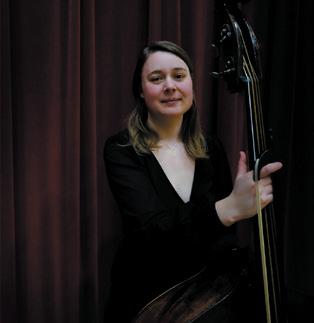
Pippa is a renowned specialist of historical bass instruments. She is a core member of Tafelmusik Baroque Orchestra in Canada, currently on leave of absence, and is exploring performing opportunities in Australia, including with the Australian Brandenburg Orchestra, Pinchgut Opera, Australian Romantic and Classical Orchestra, and Australian Haydn Ensemble. Pippa was the first undergraduate of the Royal Academy of Music to specialise in Baroque Double Bass, after which she completed a Masters in Historical Performance at The Juilliard School.
Between 2015 and 2019 Pippa was Professor of Baroque Double Bass at the Royal College of Music, London. In her native UK, she has performed regularly with The English Concert, the Orchestra of the Age of Enlightenment, Orchestre Révolutionnaire et Romantique, English Baroque Soloists, Academy of Ancient Music, and Florilegium. In 2015 she appeared in London’s West End in the Globe Theatre’s production of Farinelli and the King, as well as in the play’s Broadway transfer in 2017.
Pippa is playing a bass by Unknown, mid-18th century, Bohemia
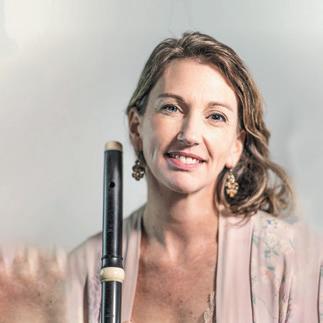
Melissa has been Principal Flute with the Australian Brandenburg Orchestra since 2003, and a core member of the Australian Haydn Ensemble since its formation. She performs and records regularly with groups including the Orchestra of the Antipodes (Pinchgut Opera), the Australian Chamber Orchestra, Ironwood, the Australian Romantic & Classical Orchestra, The Marais Project, and Latitude 37, among others. Her numerous solo performances have been with the AHE, NZ Barok, the Australian Brandenburg Orchestra, and Pinchgut Opera. She is featured as concerto soloist in AHE’s digital film Sacro Amor, Gretry’s L’amant Jaloux for Pinchgut Opera and in the Australian Brandenburg Orchestra’s Brandenburg Celebrates.
After graduating from the Sydney Conservatorium, Melissa undertook post-graduate study in modern flute, recorder, and traverso in Amsterdam. She teaches period flute at the Sydney Conservatorium and has presented Baroque-style workshops and masterclasses to modern flautists in NZ, with Adelaide Baroque (Adelaide), Flute Connections Studio (Sydney), the Australian Flute Festival (Canberra), MLC School (Sydney), Camberwell Grammar (Melbourne), in Penrith with the Australian Brandenburg Orchestra, and at the Sydney Conservatorium.
Melissa is playing a traverso by M. Wenner, 2008, Singen, after A. Grenser, c.1790, Dresden
Miracles and fantasies abound, including Haydn’s Miracle Symphony and Fantasia Quartet along with Schubert’s Rosamunde Quartet and Purcell’s Fantasia No. 8

“ The program is so beautifully curated, interesting throughout and a great showcase for the artists” State of the Art
Canberra | Berry | Southern Highlands | Sydney

Wolfgang Amadeus Mozart (1756-1791)
String Quintet in B flat major K.174
Allegro moderato
Adagio
Menuetto ma allegretto
Allegro
In December 1773 – the date written on the manuscript of his String Quintet in B flat K.174 - Mozart had been back in Salzburg for only a few weeks, after a summer and early autumn spent in Vienna. He’d been konzertmeister in the service of Archbishop Colloredo of Salzburg for just over one year, and his letters home from Vienna were a sixteen-year old’s cheerful mixture of anecdotes, enquiries after the family dog Bimperl and abysmal comic verse (“Farewell my lad / Or else I’ll go mad / I will always endeavour / To be yours now and forever”).
But Salzburg wasn’t quite the cultural desert that Mozart would later claim; and he was permanently primed to receive impressions from the musicians who worked alongside him in Salzburgincluding Michael Haydn, younger brother of Joseph, and a widely-respected master of Church music. The Mozarts joked privately about Michael’s fondness for alcoholic refreshment, but after all, no-one is a hero to their workmates, and Wolfgang took a keen interest in Michael’s music. It’s no coincidence that at the end of a year in which Michael Haydn composed two big string quintets, the ambitious teenager had a go at one of his own.
The basic line-up – string quartet plus an extra viola – was not the most usual of
combinations. In Salzburg, however, it was quite normal for the orchestras used in church to have two separate viola parts; and we know that Mozart particularly enjoyed switching from violin to viola. Superficially, his first string quintet has all the hallmarks of a divertimento (the elegant dinner-music much in demand in carnival-loving Salzburg): the bright key of B flat, the bustling motion and assertive flourishes of the opening movement, the expressive instrumental solos in the Adagio, and a stately minuet.
But it’s also clear that the young Mozart heard it as a toy box of different textures and mini-ensembles: duos over a bare bass, pairs of string trios playing against each other, and above all, a setting in which first violin and first viola might become a pair of singers, echoing and complementing each other in graceful –and increasingly emotional - duets. Who’d have thought that simply adding one viola to a string quartet could open up so many new worlds? Wolfgang lingered over this quintet, trying out its possibilities and completely rewriting his original finale. Even today, we can hear his imagination expanding, and share his sense of possibility and delight.
Wolfgang Amadeus Mozart (1756-1791)
Piano Concerto No.11 in F major K.413 arr
Allegro Larghetto
Tempo di menuetto
In 1781, when Mozart abandoned a steady but suffocating job in Salzburg for
a freelance career in the Imperial capital of Vienna, his father Leopold was (to put it mildly) horrified. Wolfgang wrote to reassure him: “My kind of music is far too popular for me not to be able to make a living. This is a true piano-land!” Eighteen months later, in December 1782, a further letter to Leopold gives a glimpse of what that freelance life actually involved for the prodigal son and his new wife, Constanze:
I have so much on that I don’t know whether I’m coming or going. I spend the whole morning until 2pm teaching; then we have lunch, and it’s only fair to give my poor stomach time to recover. So, the evening is the only time I have for composing, and even that’s not guaranteed, because I’m often invited to give concerts. I still have two concertos to complete for my subscription concerts. They’re a happy medium between too easy and too difficult – they’re brilliant, pleasant to the ear, and natural without being vacuous. There are some passages which only connoisseurs will really appreciate - but the general listener will enjoy them too, even if they don’t realise why.
This concerto seems to have been one of the two that was still incomplete when Mozart wrote his letter (on 28 December) and the fact that he performed it (as far as we know) at a concert on 11 January 1783 gives some idea of his workload –even though it’s clear from the letter that he’d already got most of it worked out, in his head if not on paper. This was still relatively early in Mozart’s concert-giving career in Vienna. In later years, and later concertos, when he knew his public and had made a name, he’d let his imagination roam to unprecedented places. For now, he was out to seduce and flatter rather than startle, and the concerto opens with an elegant, spirited orchestral introduction that wouldn’t have startled the “general listener” back in Salzburg.
Even here, though, Mozart has a treat for the “connoisseurs” – try and guess exactly when the piano will make its first entry. The slow movement could hardly be more courteous, and the finale, at first, hardly seems to make any fuss at
all: a stately minuet that almost seems to slide in from the side. For those in the know, however, Mozart has some delightful surprises in store. Days after that performance, in mid-January 1783, Mozart was already advertising the sheet music for all three concertos in the pages of the Wiener Zeitung – noting that they could “be performed either with a large orchestra with wind instruments, or a quattro”, i.e. with the accompaniment of a string quartet. Acting upon Mozart’s own suggestion, that’s exactly what we’re doing today. In fact – with the aid of bass and flute parts from Erin Helyard – we’re going one better.
Wolfgang Amadeus Mozart (1756-1791)
Piano Sonata in B flat major K.333 (Linz)
Allegro
Andante cantabile
Allegretto grazioso
By the middle of 1783 - his second full year in Vienna - Mozart decided that a return to Salzburg was overdue: not least because his father and sister had yet to meet Constanze. Like many youngsters who’d escaped their provincial hometown, he’d been apprehensive about returning. And with good reason: quite apart from Leopold’s disapproval of his marriage, Wolfgang was still technically in breach of contract with his former employer, the peppery and autocratic Archbishop Colloredo – who would have been perfectly entitled to have him arrested. In the event, Wolfgang and Constanze arrived in early August and stayed for nearly three happy and largely uneventful months. Amid the social whirl and family activities (the Mozarts enjoyed targetshooting, and Leopold had a small rifle range behind their house), Wolfgang prepared for the coming season back in Vienna. One hypothesis is that he composed this bright and expansive piano sonata as fresh teaching material for his growing list of piano pupils. Others have suggested that he composed it
during a stopover in Linz on the way home to Vienna.
What seems certain is that he intended it to display his own prowess, as well as his pupils’. The first movement, with its featherlight opening flourish, seems guileless, but it soon heads off into some surprisingly dramatic regions. The singing Andante makes no bones about its role as a vehicle for a performer who possesses both taste and deep feeling. And the rondofinale opens out into a full-blown virtuoso cadenza. It seems probable that Mozart played the sonata throughout the winter of 1783-84, then bundled it up for sale (with two unrelated sonatas) the following summer. In the “piano-land” of Vienna, a shrewd musical entrepreneur made every note pay.
Wolfgang Amadeus Mozart (1756-1791)
Symphony No. 36 in C major K.425 (Linz)
Adagio - Allegro spiritoso Andante Menuetto Presto —
But there’s one piece that we can positively say was composed in Linz:
Linz, 31 October 1783
Right after I arrived, Count Thun came up to me and informed me that I should drive to his house directly because he wanted us to stay with him…On Tuesday, that’s November 4th, I’m to give a concert at the theatre here - and as I didn’t bring one single symphony with me, I’ll have to write a new one at breakneck speed – for it has to be finished by that time. I must close now, for I have to start work at once…
You read that correctly. Pausing in Linz on the way back from Salzburg, Mozart had to
produce a work for a concert in his own honour. With nothing in his luggage, he sat down and wrote a completely new symphony in slightly less than four days. To be fair, he knew he had to meet certain requirements. Count Thun’s orchestra had trumpets and drums, but no flutes or clarinets. That would immediately have suggested a certain sound - bright, celebratory, majestic. The peculiarities of 18th-century brass instruments meant that they sounded best in certain keys –and of these, the sunny, straightforward key of C major was the one best suited to a celebratory, majestic work. It had to be all these things, of course. Courtesy to Mozart’s noble host demanded no less.
We know that he made the deadline, because here it is, the “Linz” symphony in all its sonorous, endlessly inventive splendour. We’re performing it today in a six-player version created in London in 1791 by the Venetian composer, multiinstrumentalist and Mozart superfan Giambattista Cimador (1761-1808) – a practice that Mozart would have expected and which in fact (as we’ve seen) he cheerfully endorsed. The colours are slightly changed, but the basics are all present and correct – from the slow, imposing introduction (a rare feature in a Mozart symphony), to the energetic Allegro that follows and the graceful Andante: a lilting Sicilienne that gradually evolves into something more like a romantic landscape. The stately Menuetto will have given Mozart no trouble at all, and everybody gets their reward in the finale, a high-octane masterpiece of musical humour. Genius, it seems, doesn’t just overcome limitations. It positively thrives on them.
Richard Bratby

The last 18 months has been a time of rich musical achievement. Following the excitement of our triumphant US tour — with acclaimed performances at venues including Carnegie Hall — we returned home inspired and energised. That momentum carried us through into bold and imaginative programs in 2024 - highlights include our Heavenly Sopranos tour with Celeste Lazarenko and Helen Sherman, and our orchestral program Haydn’s Passion, which toured a fullscale ensemble to new regional locations.
A personal highlight was the release of our recording entitled The Mozart Album, backed up by live performances of Mozart’s Violin Concerto No. 3. Definitely one of the most exhilarating experiences of my musical life to date!
Our 2025 season is going strong, and we can’t wait to share the rest of our year with you – including this wonderful performance with Erin Helyard. The support we receive from our donors is nothing short of life-changing. Without your contributions, we simply could not continue to bring this beautiful repertoire to audiences in NSW and beyond.
As the end of the financial year approaches, I invite you to make a donation and continue investing in the future of this music we love. Every gift, large or small, is deeply appreciated.
Thank you
Skye McIntosh Artistic Director
Online— by using this QR code or going to australianhaydn.com.au/donate Call us— on 1800 334 388 to donate over the phone

Our patrons enable us to continue presenting wonderful concerts. We are so grateful to everyone who supports us and cannot thank you enough. Patron categories are named after famous 18thcentury patrons who supported and commissioned many of Haydn, Mozart and Beethoven’s works that we know and love today. Where would we be without them?
About our Patron Categories—
Maria Theresa—
The Queen was a patron of Viennese music, and Haydn wrote his Te Deum at her request.
Esterházy—
Prince Esterházy was the main patron of Haydn.
Waldstein—
Count Waldstein was an early patron of Beethoven.
Van Swieten—
He was a keen amateur musician and patron of Haydn, Mozart, and Beethoven.
Galitzin—
He was an amateur musician and is known particularly for commissioning three Beethoven string quartets Op. 127, 130 and 132.
Lobkowitz—
He was a Bohemian aristocrat and a patron of Beethoven.
Razumovsky—
He commissioned Beethoven’s Op. 59 String Quartets.
Patron—
Her Excellency the Honourable Margaret Beazley AC KC
Governor of New South Wales
Founding Patron—
The late Dr Timothy Pascoe AM
The Chair’s Circle —
The Chair's Circle is a group of dedicated supporters who have made a multi-year commitment to supporting the long-term vision of the Australian Haydn Ensemble
Marco Belgiorno-Zegna AM & Angela Belgiorno-Zegna
Sherry & the late Tom Gregory
Karin Keighley
Peter & Lisa Macqueen
Kevin McCann AO & Deidre McCann
Ian & Pam McGaw
Anthony Strachan
Peter Young AM & Susan Young
Anonymous 1
Artistic Director’s Circle—
The Artistic Director’s Circle is a group of passionate supporters who have made a commitment to supporting the AHE education program and the vision of the Artistic Director
Jan Bowen AM FRSN
Carolyn Fletcher AM
Adrian Maroya
Jon & Susan North
Peter & Vivienne Skinner
MARIA THERESA $25,000
David & Anne Eustace Foundation
Sherry & the late Tom Gregory
Howarth Foundation
Karin Keighley
Kevin McCann AO & Deidre McCann
Anonymous (1)
ESTERHÁZY $15,000 – $24,999
Marco Belgiorno-Zegna AM & Angela
Belgiorno-Zegna
Carolyn Fletcher AM
Peter & Lisa Macqueen
Ian & Pam McGaw
Philanthropy Initiative Australia, a giving fund of the APS Foundation
Peter Young AM & Susan Young
WALDSTEIN $10,000 – $14,999
Jan Bowen AM FRSN
Anthony Strachan
Kim Williams
VAN SWIETEN $5,000 – $9,999
Martin & Ursula Armstrong
Dr Terry & Julie Clarke
Jeremy Eccles FRSN & Kate Eccles OAM
Reg & Kathie Grinberg
Adrian Maroya
Jon & Susanne North
Peter & Libby Plaskitt
Peter & Vivienne Skinner
The Hon. Anthony Whealy K.C. & Annie Whealy
In Memory of Tom Gregory & Timothy Pascoe
GALITZIN $1,000 – $4,999
Priscilla Adey
Antoinette Albert
Mark Bethwaite AM & Jill Bethwaite
Clive Birch
Keith & Louise Brodie
Dr Andrew Byrne & Allan Gill
Dr Michael & Dr Colleen Chesterman
George H. Clark
Robert & Carmel Clark
Jean Cockayne
Richard & Cynthia Coleman
Dr Nola Cooke
Dr Peter Craswell
Peter & Prudence Davenport
Rob Diamond
Alison Dunn
David, Katrina & Madeline Evans
Ralph Evans AO & Maria Evans
Terry Fahy
John Fairfax AO & Libby Fairfax
Richard Fisher AM & Diana Fisher
The Hon. Ben Franklin MLC
Bunny Gardiner-Hill
Pru Goward
Sharon Green
James Hardigg
The Hon Don Harwin
The late Elizabeth Howard
Michael & Anna Joel
Sarah de Jong
Lucy Kalangi
David Kent OAM & Angela Kent
Celia Lillywhite
Diccon & Liz Loxton
David Maloney AM & Erin Flaherty
Dr Jacqueline Milne
Trevor Parkin
Nick Payne
Susan Perrin-Kirby
David & Elizabeth Platt
Keith & Robyn Power
Greg & Wendy See
Danielle Smith
The Smithers Family
Augusta Supple
Kay Vernon
Anonymous (7)
LOBKOWITZ $500 – $999
James Ashburner
Jock Baird
Tony Barnett
Dr Chris Blaxland
Jeffrey Bridger
Lloyd Capps & Mary Jo Capps AM
Christine Cooper
Matt Costello & Bernie Heard
Sandra Duggan
Dr Terence & Deborah Dwyer
Dr Marguerite Foxon
Jean Gifford
David Jordan & Louise Walsh
Gerard Joseph
Rod & Diane McAllery
Dr Paul & Betty Meyer
Janet Nash
Beverley Northey
Deidre Rickards
Penelope Seidler AM
Roger & Ann Smith
Mike & Rosie Sprange
David Whitehouse
Anonymous (3)
RAZUMOVSKY $250 - $499
Ann Armstrong
Wayne Arthur
Richard Bloor
Wendy Cobcroft
Dr John Dearn
Dr Meredith Edwards
Michael Fong
Rosemary Greaves
Kate Guilfoyle
Heather Kenway
Patrick McIntyre & Yianni Faros
Jeremy Morris
Jan Marie Musico
Heather Nash
Henry O’Connor
Jennifer Rose-Innes
Dr Richard Sippe
David & Jill Townsend
Alicia Williams
Anonymous (3)
This listing is correct as of 26 May 2025, and we gratefully recognise all donations received since 1 January 2024.
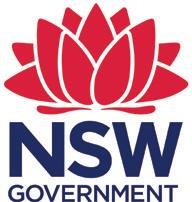
AHE is supported by the NSW Government through Create NSW.
Education Partner

Media Partner
Audit Partner
David & Anne Eustace Foundation
Howarth Foundation
Jibb Foundation
Sir Asher & Lady Joel Foundation
Key Foundation
Philanthropy Initiative Australia, a giving fund of the APS Foundation
Sinsay Pty Ltd
Stoneglen Foundation
Australian Haydn Ensemble is a not for profit organisation. ABN 26 202 621 166 PO Box 400 Strawberry Hills NSW 2012 1800 334 388 (Freecall) | australianhaydn.com.au
Kevin McCann AO (Chair)
Carolyn Fletcher AM (Deputy Chair)
Jan Bowen AM FRSN
Adrian Maroya
Skye McIntosh (Artistic Director)
Jon North
Vivienne Skinner
Peter Young AM
Marco Belgiorno-Zegna AM (Chair Emeritus)
Skye McIntosh
Artistic Director
Ailsa Veiszadeh Administrator
Alison Dunn
Marketing & Communications
Roderick van Gelder
Lighting Design & Production Management
Stephen Bydder
Box Office & Administration
Marguerite Foxon
Front of House & Administration*
*In Kind Support
John Dearn, Canberra
Jean Gifford, Canberra
Images throughout by Helen White except page 6 Cassandra Hannagan (courtesy of Pinchgut Opera), pages 6-9 ,17 Oliver Miller & James Mills and page 13 Oliver Miller.
The Australian Haydn Ensemble acknowledges the traditional custodians of the lands on which we live, rehearse and perform. We pay our respects to Elders past and present.
Details in this program are correct at time of publication. The Australian Haydn Ensemble reserves the right to add, withdraw or substitute artists and to vary the program and other details without notice. Full terms and conditions of sale available at our website australianhaydn.com.au or on request.